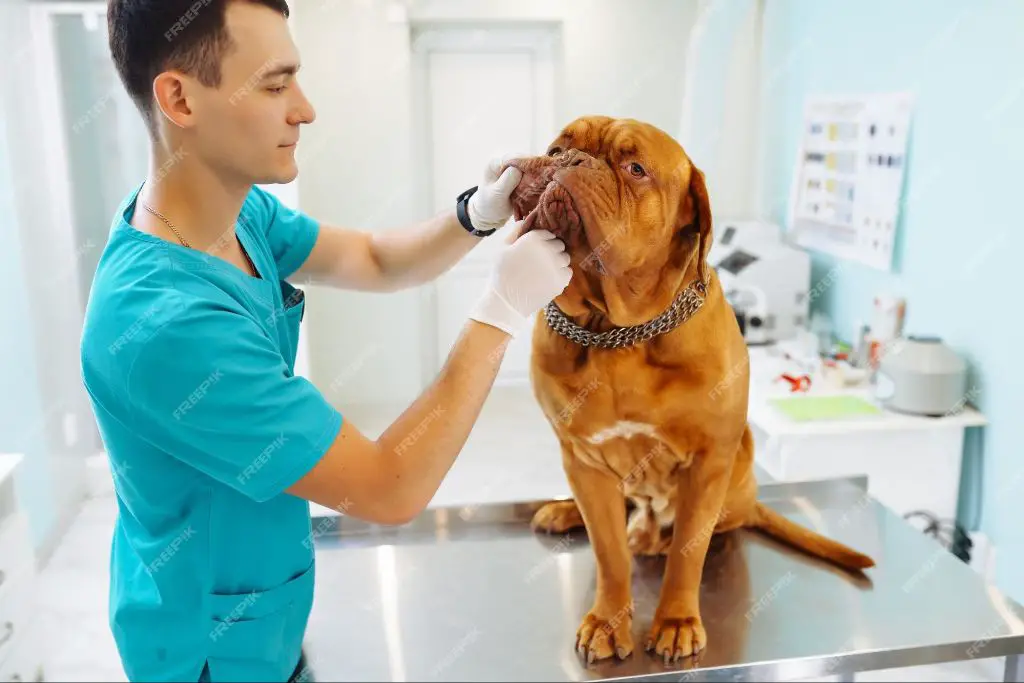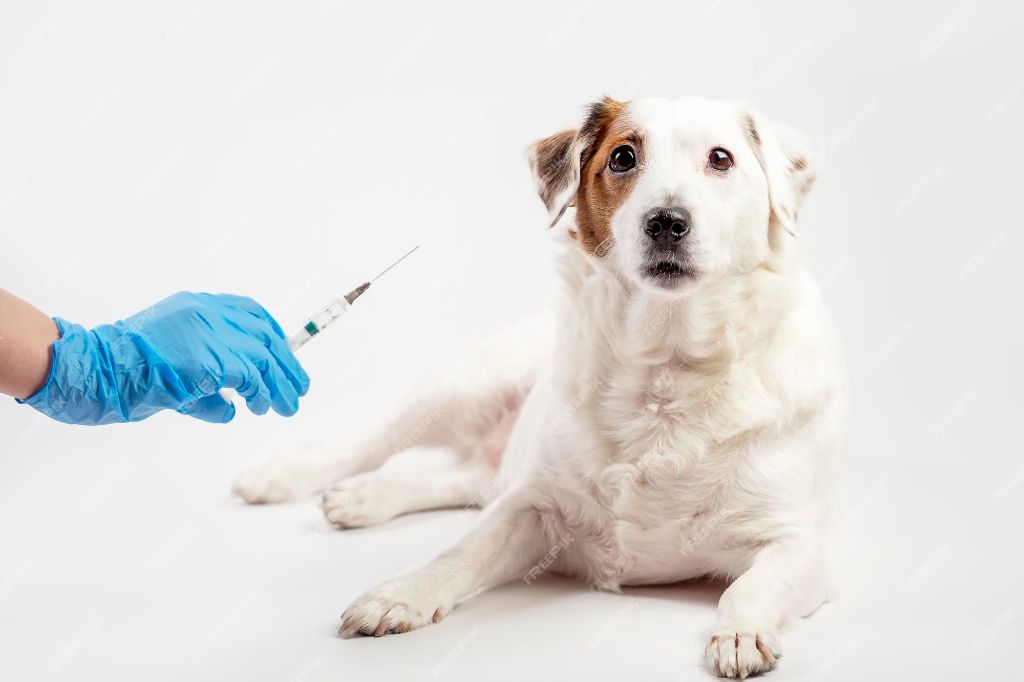Introduction
Cancer is unfortunately very common in dogs, just as it is in humans. When a dog develops cancer, one of the main concerns for pet owners is managing their pain and discomfort. Cancer can cause moderate to severe pain depending on the type, location, and stage of the disease.
The goal of this article is to provide an overview of the causes of cancer pain in dogs, how vets assess and measure it, different treatment options available, and how to improve quality of life. While cancer is difficult for both pets and their owners, understanding pain management options can help provide dogs relief and allow them to live comfortably for as long as possible.
Types of Cancer in Dogs
Some of the most common types of cancer found in dogs include:
Lymphoma: This cancer of the lymphocytes affects the dog’s lymph nodes and immune system. It accounts for roughly 20% of all dog cancers and may occur at any age. Certain breeds like boxers, bulldogs, and golden retrievers are at higher risk. Treatment typically involves chemotherapy.
Mast Cell Tumors: These skin tumors derive from mast cells. Mast cell tumors account for about 20% of skin tumors in dogs. They can be benign or malignant and may spread to other areas. Mast cell tumors are especially common in boxers, Boston terriers, pugs, schnauzers, and beagles. Surgery is the most common treatment.
Osteosarcoma: This bone cancer tends to affect large and giant breed dogs. It accounts for roughly 5% of tumors in dogs. The tumors often start in the limbs and spread elsewhere. Treatment involves amputation and chemotherapy. Certain breeds like Great Danes and rottweilers are predisposed.
Causes of Cancer Pain
Cancer pain in dogs has several potential causes stemming from the disease itself and its treatment. One of the main causes of pain is from the tumor pressing on surrounding tissue and nerves. As the cancer grows and spreads, it puts pressure on organs, bones, nerves, and other sensitive structures. This continuous pressure leads to inflammation, nerve damage, and general discomfort or pain from the distortion of tissue. Nerves may also become directly invaded or damaged by the cancer cells, resulting in neuropathic pain.
In addition to the tumor itself, cancer treatments like surgery, chemotherapy, and radiation can inadvertently cause pain. Surgery may damage nerves or leave behind scar tissue that puts pressure on tissues. Chemotherapy drugs can cause painful side effects like mouth sores, vomiting, and nerve damage. Radiation can also irritate and inflame irradiated areas. Therefore, while these treatments are targeting the cancer, they can sometimes worsen pain temporarily as the body recovers. Managing treatment-related pain is an important part of the dog’s overall pain relief plan.
Assessing Pain Levels

Since dogs can’t verbally communicate when they are in pain, it’s important for pet owners to watch for behavioral signs. Changes in a dog’s activity levels, appetite, facial expressions and posture can all be indicators of pain. Some specific things to look out for include:
- Decreased activity or lethargy
- Less interest in toys or walks
- Changes in sleeping patterns
- Loss of appetite or disinterest in food
- Yelping or whining for no apparent reason
- Aggression when touched or handled
- Facial expressions like squinting eyes or flattened ears
- Reluctance to jump up or go up stairs
- Stiffness, trouble getting up, or limping
- Excessive licking or biting at certain body parts
Paying close attention to a dog’s normal behavior and watching for any deviations can help determine if pain is present. Keeping a symptom log and tracking changes over time can also help vets assess the severity of pain for diagnosis and treatment purposes.
Pain Rating Scales
Since dogs can’t verbally communicate how much pain they are in, veterinarians use pain rating scales to help quantify and assess pain levels. Some common pain scales used for dogs with cancer include:
Glasgow Pain Scale: This scale rates pain based on parameters like vocalization, mobility, attention to wound site, and response to touch or palpation. It uses a scoring system from 0 (no pain) to 20 (max pain). Vets observe the dog’s behavior and give a score for each parameter to determine the pain level.

Other scales like the Numeric Rating Scale (NRS), Visual Analog Scale (VAS), and Simple Descriptive Scale (SDS) may also be used. These rely on observation of behaviors and changes to quantify pain. Tracking ratings over time can help assess if pain management therapies are effective.
While pain scales have limitations, they do provide vets with standardized tools to measure and document pain levels in dogs. This assists with tailoring pain relief protocols. Consistent use of scales provides comparable pain data over time for each dog.
Pain Management Approaches
There are a variety of methods available for managing cancer pain in dogs. The goal of pain management is to provide the highest quality of life possible by alleviating and controlling pain.
Pain medications prescribed by veterinarians are commonly used for managing cancer pain. Examples include non-steroidal anti-inflammatory drugs (NSAIDs), opioids, steroids, and adjuvant drugs. These medications can be very effective, but dosages and side effects need to be carefully monitored.
Radiation therapy uses high-energy radiation to shrink tumors and relieve pain. It helps treat cancers that have not metastasized and is often used along with other treatments. Though expensive, radiation therapy can provide pain relief in difficult to treat cancers.
Surgery can remove cancerous tumors pressing on nerves and tissues, providing rapid pain relief. However, surgery may not be an option if the cancer has spread. The risks of anesthesia and complications should also be considered.
Integrative methods like acupuncture, massage, and physical therapy may help manage cancer pain when combined with conventional treatments. While not stand-alone cures, they can improve comfort levels. Herbal supplements and nutritional support may also aid in pain control.
Working closely with veterinary oncology specialists and tailoring the pain management approach to the individual dog’s needs is key to ensuring the best possible quality of life.
Medications
Medication is a common approach veterinarians prescribe to help manage cancer pain in dogs. Some types of medications used include:
NSAIDs (nonsteroidal anti-inflammatory drugs) – These medications, like meloxicam or carprofen, reduce inflammation and pain. They are usually used for mild to moderate pain. Side effects like stomach ulcers or kidney problems can occur, so monitoring is needed.
Opioids – For more severe pain, opioids like tramadol, hydrocodone, or morphine might be prescribed. These can provide substantial pain relief but have potential side effects like sedation or constipation that require monitoring.
Steroids – Steroids like prednisone have anti-inflammatory effects and can reduce swelling, inflammation, and pain in some instances. Short term use is often recommended to avoid side effects.
Finding the right medication or combination to provide adequate pain relief without problematic side effects may take some trial and error. Veterinary supervision is crucial.
Holistic Methods
In addition to pain medications, there are several holistic methods that can help manage cancer pain and improve quality of life in dogs:
Acupuncture involves placing thin needles into specific points on the body to stimulate nerves and muscles. This is thought to trigger the release of endorphins, which are the body’s natural pain killers. Acupuncture may help relieve pain, reduce inflammation, and improve immune function in dogs with cancer.

Massage therapy can help relax muscles, decrease stiffness, and increase blood circulation. Gentle massage may provide comfort, relieve anxiety, and reduce cancer pain in dogs. Certain massage techniques can also help drain fluid buildup and lymph node blockages.
Dietary supplements such as fish oil, turmeric, milk thistle, and bromelain have anti-inflammatory and cancer fighting properties. Discuss supplement options with your vet, as some may interact with cancer medications. Supplements should complement, not replace, conventional treatments.
Improving Quality of Life
Focusing on quality of life is crucial when caring for a dog with cancer. There are several ways to help enhance comfort, mobility, nutrition and mental health:
Make sure to monitor your dog’s food and water intake. Offer soft, easy to eat foods if needed. Supplement with vitamins and nutrients. Feeding tubes or IV fluids can help ensure nutrition if your dog has trouble eating.
Help your dog get around comfortably. Use ramps, orthopedic beds and harnesses. Try physical therapy exercises. Keep nails trimmed to avoid slipping.
Give your dog mental stimulation through play, training, puzzles and social interaction. Stick to familiar routines. Try calming aids if your dog seems anxious.
Make time for quality time together through petting, massages or just sitting nearby. Keep up with grooming and baths. Manage pain and side effects under vet supervision.
Focusing on improving quality of life can help maximize comfort during this difficult time. Work closely with your vet to develop a comprehensive palliative care plan.
When to Consider Euthanasia
No owner wants to consider euthanizing their beloved dog, but sadly it can become necessary in certain situations. The most heartbreaking scenario is when a dog experiences severe, unmanageable pain from cancer that cannot be controlled with pain medications or other treatments. If the dog’s pain is so extreme that it causes constant suffering and severely impacts quality of life, euthanasia may be the most humane option.

Euthanasia may also need to be considered if the dog’s prognosis is very poor. Certain cancers like hemangiosarcoma and osteosarcoma have low survival rates, even with treatment. If the cancer is advanced, rapidly progressing, or therapies have been exhausted without success, the prognosis may be grave. In these cases, treatment is no longer helping and euthanasia can spare the dog prolonged distress and suffering at the end stages of disease.
While euthanasia is an immensely difficult decision, it demonstrates the deepest love and kindness for a pet in unbearable pain or with no chance of recovery. The goal is to allow a peaceful passing free of suffering. It is an act of caring and compassion when all other options have been exhausted. Discussing euthanasia with a vet can help determine if it may be kindest choice to prevent further pain and distress.